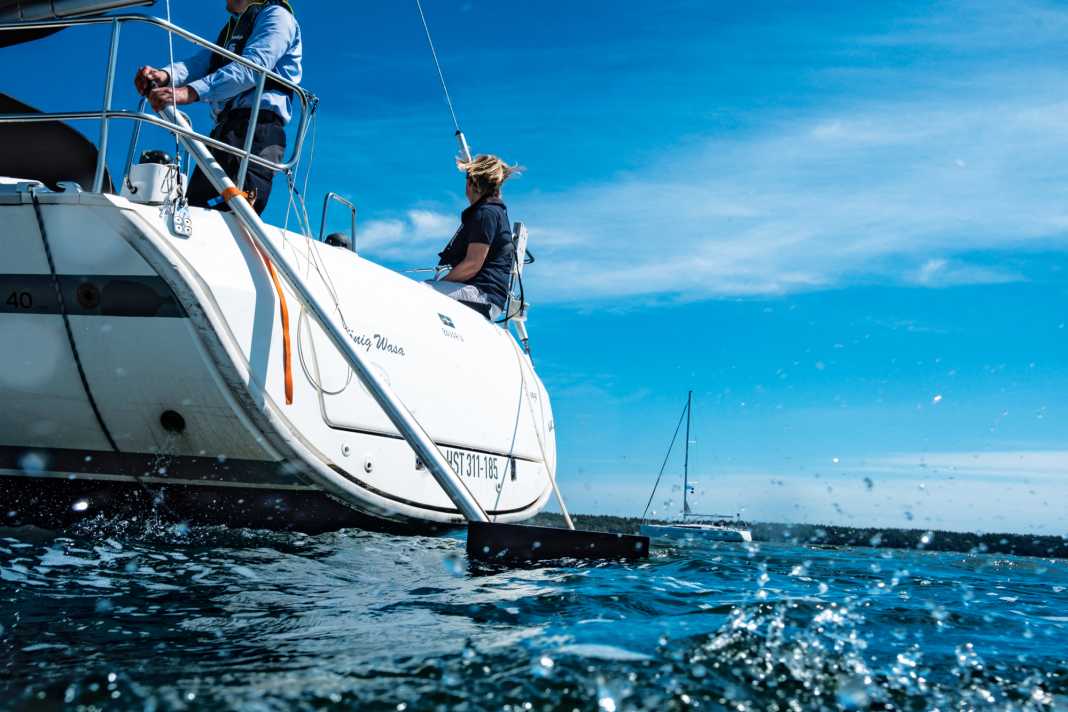


- Preparation is everything
- Little sea space
- Notruder systems
- The emergency
- Steering with sail trim and shrouds
- Improvisations born out of necessity with on-board resources
- Towing with drift anchor aft in the water
- Longitudinal towing
- With broken steering cable
- Checklist rudder breakage
- Video on YACHT-TV: How to get ahead without a rudder
Many damages that occur at sea can be repaired in a makeshift manner; they do not immediately jeopardise the safety of the crew and the boat or even the continuation of the trip. If the engine won't start, you can get to harbour under sail if necessary; if the electronics go on strike, the navigation app on your smartphone will show you the course, and if a winch fails, you just use another one. Even in the event of serious rig damage or even loss, the sailor and boat can reach the next harbour under motor. However, if the rudder breaks, it is not so easy to find a replacement - and getting to the next harbour is not easy.
Also interesting:
Fortunately, complete loss of the rudder blade is not that common. Nevertheless, it is sensible and good seamanship to have an emergency plan in mind for this situation. Because in the event of a rough grounding or a collision with flotsam, it can happen: The fin is gone. Then action must be taken quickly, as the yacht is uncontrollable without a rudder blade.
Preparation is everything
Experience from a test with the "Oke" on the Greifswalder Bodden, in which the attached rudder system broke off due to undersized rudder bearings, has been incorporated into the preparation of this article. In the situation three years ago, the first idea was to lash the undamaged blade and tiller behind the boat with mooring lines. The stern cleats were ideal for this. However, the forces involved were so great that the ropes cut into the rudder blade. In addition, the lines could not be tightened enough to hold the rudder in place.
In the end, the only option was to take the yacht in tow and keep it from listing with a jib hung aft. Half an hour of gennaker roaring before losing the rudder added up to almost four hours of snail's pace towing on the way back to the harbour. The approximately half-metre-high Bodden wave thwarted any attempt to tow the damaged boat alongside.
However, there are other tactics in the literature and online for bringing a rudderless boat into safe harbour without outside help. To try these out, we borrowed a Bavaria 40 Cruiser with the rudder blade removed from the charter company Mola. Together with employees from Sailpartner - a company that offers safety training for sailors, among other things - we played through all possible scenarios on the Bodden off Breege.
Little sea space
There was no swell in this sheltered area, which would undoubtedly have made the manoeuvres even more difficult. However, the small sea space of one nautical mile by one nautical mile posed the greater challenge, and it was immediately apparent whether the endeavour to bring the boat on course was successful.
If the rudder stops working, the crew member at the helm will notice immediately, as the boat will suddenly become uncontrollable. The sails should then be recovered, as they will only accelerate unwanted turns. In any case, a sailing yacht without a rudder cannot be steered using sail trim, as we discovered. If the boat is in relatively shallow water, the anchor can be made fast. In a leeward situation, it is possible to make room to windward with the genoa and engine astern.
A look in the bilge will then clarify whether water is also penetrating in addition to the rudder damage. If so, the water ingress must first be stopped. If you are anchored or have enough sea room to leeward, the damage should be assessed. Has the rudder really gone or is it just the steering cable loose and jumped off the quadrant? In the latter case, the emergency tiller is a quick and easy solution to regain manoeuvrability, and the steering cable can be quickly reattached and tensioned. However, if the rudder is broken off high up, a temporary replacement or towing aid must be considered.
In this test, we built the Notruder from a spar and a floor board. A cupboard door or a lid from the storage spaces under the cushions would also work. The size may need to be adjusted with a saw. Tensioning straps are not necessarily sufficient to secure the board to the spar, as the forces involved are very high. Hose clamp tape has proved its worth in tests. Holes are drilled to the right and left of the spar with a cordless drill, the steel band is then pulled through and tightened with the clamps. It is also important that the board cannot twist against the spinnaker pole. Two screws through the eyes in the boom cam help to prevent this. A suitable place must then be found at the stern for attaching the improvised rudder. The steering wheels can be removed to create enough space. This can be done very quickly with a winch handle.
We first installed the self-built emergency rudder in the centre, but it was difficult to lash it there and was very wobbly. It worked better off-centre on the port stern pulpit, where the spinnaker pole was attached with a tensioning strap. Important: do not pull the strap completely tight so that the emergency rudder can still be moved. We discarded the initial idea of attaching it to the ladder on the folded-down bathing platform, as this made a very wobbly impression and did not seem able to withstand the rudder forces. In addition, the hinges of the bathing platform would have had to absorb all the forces, which they are clearly not designed to do.
At engine speeds of up to three knots, the yacht could be kept on course with the emergency rudder; at faster speeds, the rudder pressure became too great and the boat could no longer be kept on course. Interestingly, the rudder pressure was lower under sail. In gusts, however, the crew had to support the helmsman by fiddling or tightening the sheets, as otherwise there was a risk of being hit by the sun.
If the necessary items for building an emergency rudder are not on board, towing assistance must be called, for example by pan-pan call via radio. Towing is best done with the unmanoeuvrable ship moored alongside. However, this does not work in rough seas, which is why the classic method of towing is usually with a long line. However, the damaged vessel must be slowed down by towing objects to prevent it from rolling over.
For smaller and lighter yachts such as the "Oke" three years ago on the Greifswalder Bodden, a punt on the long mooring line is sufficient. In the current case, the braking effect was too low, and only a drift anchor from a life raft with a diagonal of 130 centimetres brought the desired success. The 700 euros required to make the life raft ready again are the price for a safe return to the harbour.
However, it is not possible to tow particularly fast. The limit is reached at 3.5 to 4.0 knots, where a slight lurching of the towed boat turns into a constant list.
Notruder systems
To be prepared for emergencies, it is not necessary to buy a spinnaker pole if the sail load only includes a gennaker and code zero; there are also emergency rudders available. Windpilot, for example, a manufacturer of wind control systems, offers an emergency rudder. Owners who already have the Pacific wind vane from the same manufacturer on board hardly need to retrofit anything. The SOS Rudder is also available as a stand-alone system, which is then called SOS Rudder Solo. The system is available in two sizes for boats up to 40 and from 40 to 60 feet. The Notruder is stowed in a bag measuring 130 x 40 x 20 centimetres and weighs between 23 and 30 kilos, depending on the size.
On newer sailing yachts, the rudders are often protected against total loss in the event of a collision with flotsam by not extending the rudder stock all the way through to the lower edge of the rudder blade. This creates a sacrificial piece at the lower end, which breaks off more easily without damaging the rudder shaft and coker. The remaining blade can then be used to bring the yacht into harbour. With preparation and a little improvisation, it can also be done without a rudder.
The emergency
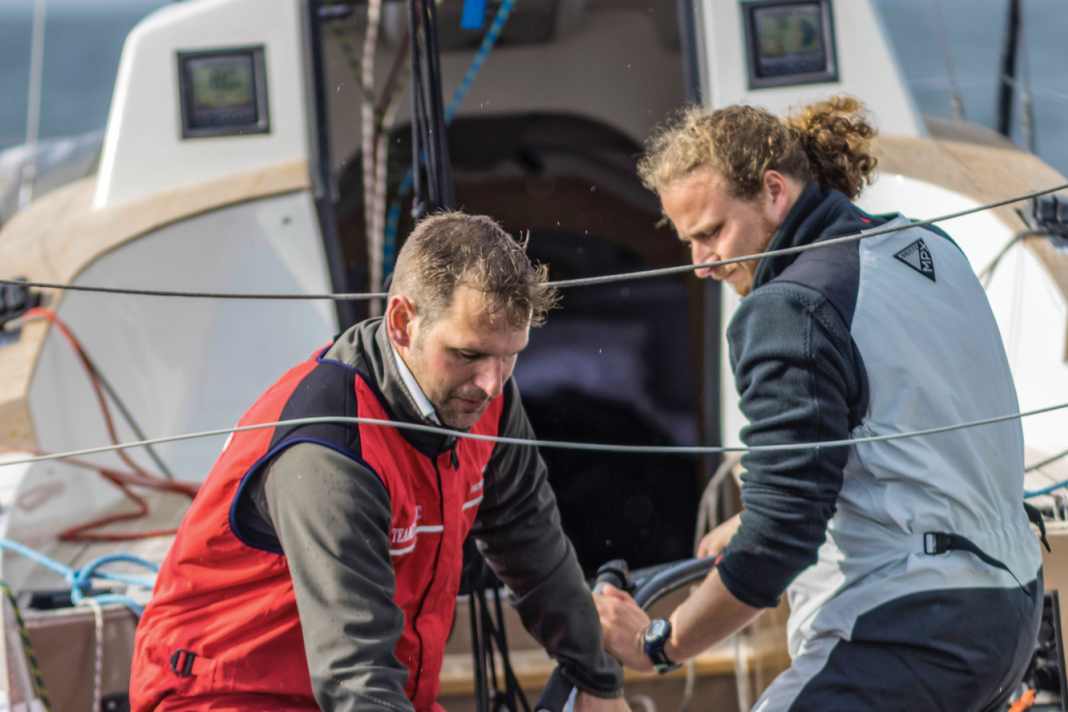



In order to test the emergency tactics in the event of a total loss of the rudder, the shipyard of the charter company Mola removed the rudder from a Bavaria 40 Cruiser. Together with the safety experts from Sailpartner, we went through all possible scenarios to bring the unmanoeuvrable yacht safely back into port. This also included experience from a real emergency. The rudder broke off during the test of the "special boat" "Oke" in 2017. The attempt to lash the attached rudder system behind the transom with mooring lines failed; the lines cut into the blade. In the end, only slow towing with a jib aft as stabilisation worked.
Steering with sail trim and shrouds
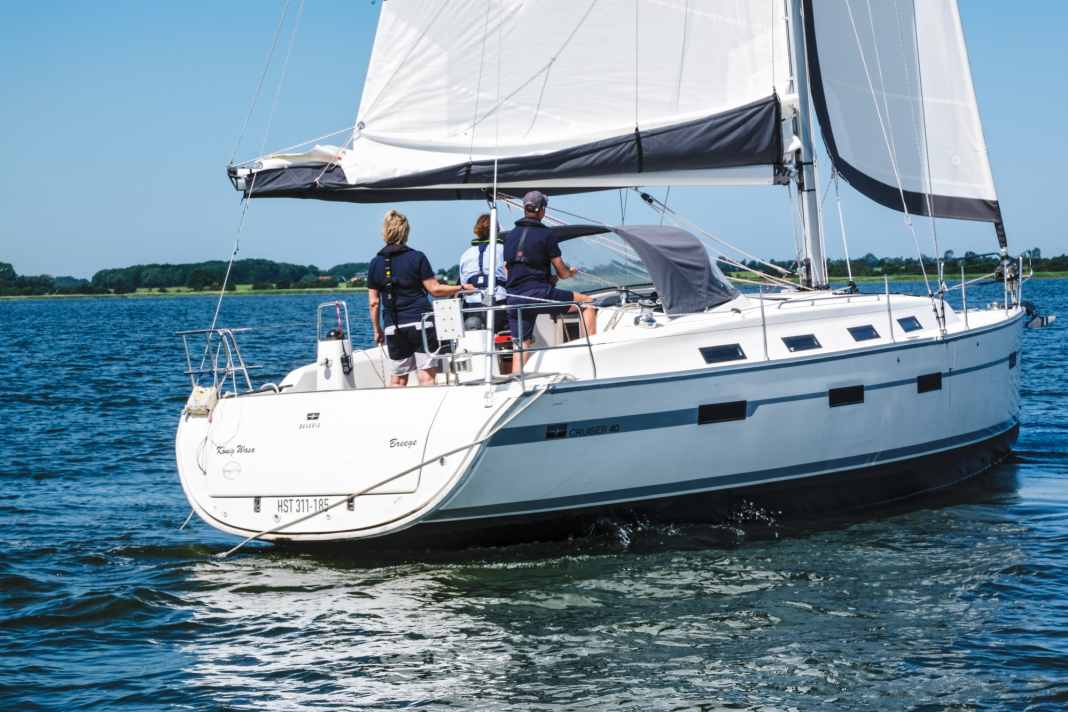


On dinghies, it is even a training method: steering without a rudder system using only sail trim and weight shifting. On a yacht that is over twelve metres long and weighs nine tonnes, variations in weight trim naturally do not produce any noticeable results. Nevertheless, we tried our luck under sail. The boat kept turning round and round. At first, the pressure in the main was too high and the boat was extremely luffy. The first and second reefs seemed to make the difference, but now the pressure in the genoa was so high that it went into a patent gybe to leeward first. We then also rolled the genoa away piece by piece.
The turns could be stopped by holding the headsail back and unfurling the mainsheet, but it was completely impossible to steer the boat straight ahead. For brief moments, the boat picked up speed through concentrated trimming and good coordination of the crew on the foresheet and mainsheet, only to whirl wildly around its own axis again. The missing rudder blade created an extreme imbalance between the lateral and sail plan, and the lack of a tail unit in the water made it impossible to sail straight ahead. Not even with a jib towed astern.
What was exciting, however, was the realisation that there is still a way to move the boat to windward in a reasonably controlled manner and thus avoid the threat of stranding or keep clear of a fairway: With the genoa half unfurled and travelling strongly astern, the stern aligns itself in the direction of the wind due to the wind vane effect. The bow then billows strongly, but this can be minimised by the sail: simply set the sheet to the half-wind position. The sail then folds over automatically and stands partially back. This allows the boat to move safely backwards against the wind in slight serpentine lines.
Valuation
- - No controllable speed possible by varying the sail trim
- - Enclosure does not work
- + With genoa and engine backwards to windward out of leeward leeward wall works
Improvisations born out of necessity with on-board resources
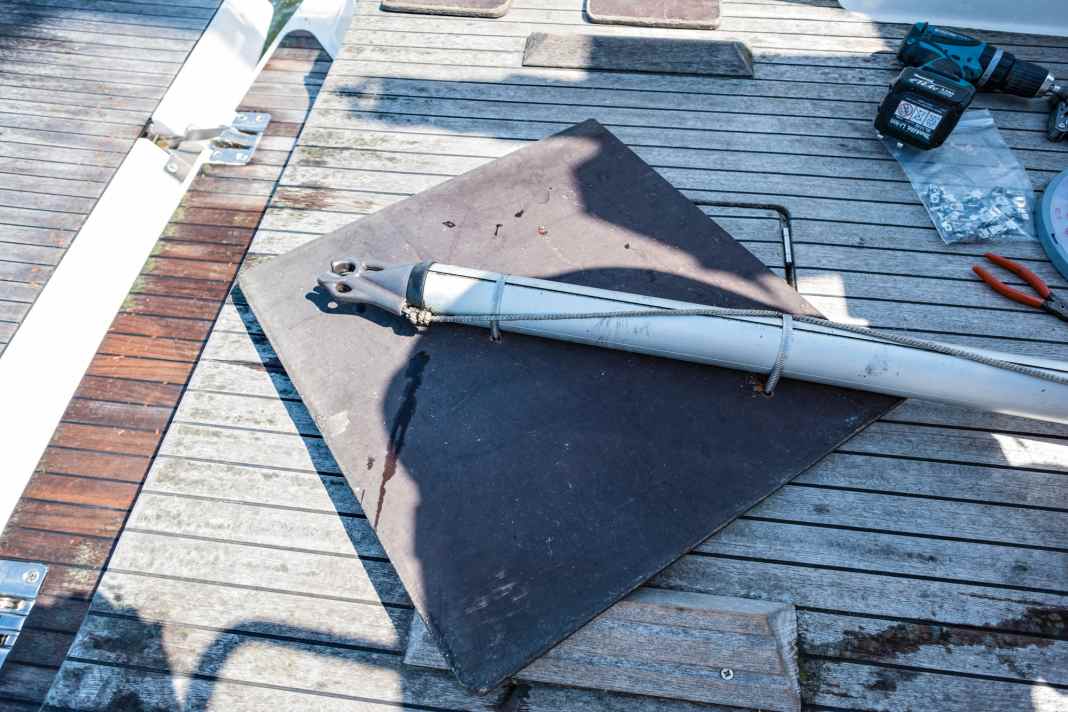





First the good news: it works! With the improvised emergency rudder, the yacht could be kept on course and controlled course changes were also possible. However, the rudder pressure was extremely high and very attentive steering was required to prevent the boat from going off course; as soon as you went too far off course, it started to turn. And it was extremely difficult to stop this rotation and bring the boat back on course. This was probably due to the overall undersized rudder.
The spinnaker pole was very short at just under three metres. This meant that only a very short end remained for steering, as the much longer part protruded into the water due to the high freeboard. In addition, the old bottom board, which served as a rudder blade, was very small at around 40 x 50 centimetres. We attached the boom diagonally to the board so that the water flowed around the long side. The rowing effect was best when it was as upright and deep in the water as possible. To prevent the spinnaker pole from twisting, two screws were screwed through the eyes for the top and downhaul on the boom cam.
It was astonishing that despite the high forces, all connections held and nothing had loosened even after the test. As soon as towing assistance is available, this is preferable to steering with an emergency rudder.
Valuation
- + Yacht can be kept on course
- - Extremely strenuous to steer
- - It is becoming increasingly rare to find a spinnaker pole on yachts, and never on charter boats
Towing with drift anchor aft in the water
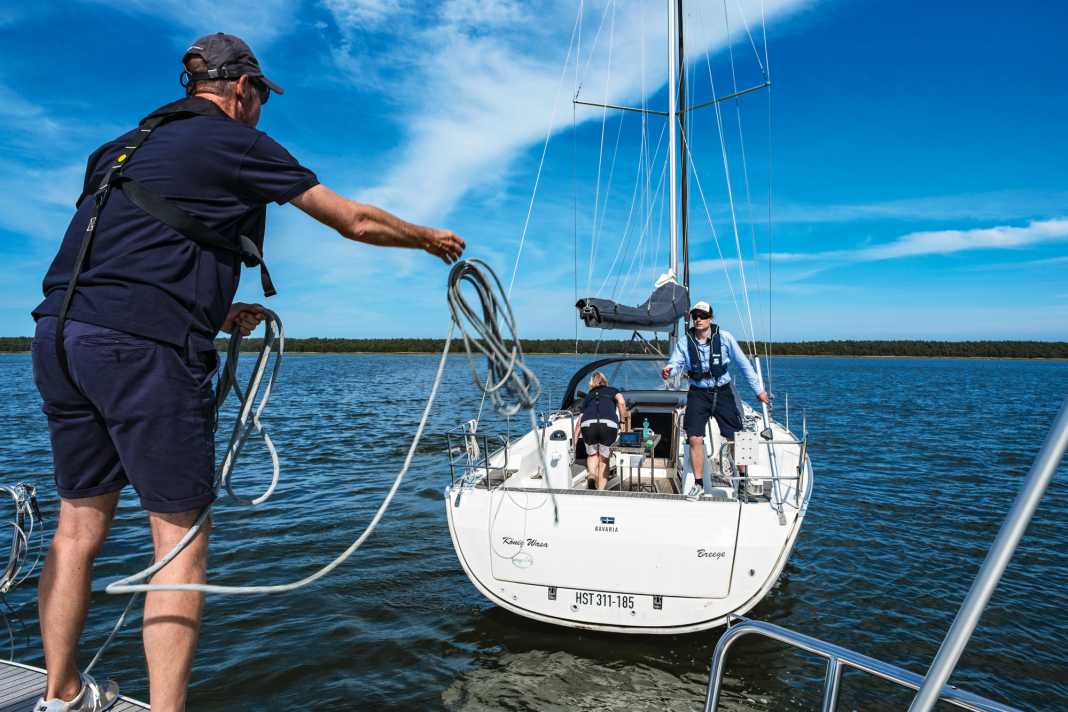




If another boat is nearby or can be called in for a tow, this is the best way to bring the unmanoeuvrable vessel safely and easily into the next harbour. Unfortunately, however, it is not possible to simply establish the towing connection and set off - the yacht without a rudder will immediately list. The keel, which is at right angles to the direction of travel, brakes abruptly, causing a strong jerk in the line connection and bringing the towing ship to a hard stop. There is a risk that the line will break and the boats will not make any progress, not even very slowly.
In order to enable a reasonably safe straight-ahead journey, the stern of the towed yacht must be pulled aft to prevent it from listing. This works with objects that are towed behind. The bailer was not sufficient for the Bavaria; it only dampened the turning movement very slightly, but did not prevent the yacht from listing. Only a "drift anchor" with a diagonal of 130 centimetres, which consisted of a life raft, ensured safe towing.
This is also possible in windy and rough seas. The longer the lines between the boats and between the boat and the drift anchor, the smoother the rolling motion. Nevertheless, the Havarist could only be towed at around 3.5 knots: If the speed was higher, the boat would turn over again. This method does not work in narrow fairways or in the harbour, in which case the boat has to be taken alongside as soon as conditions allow.
Valuation
- + Towing also possible in windy and rough seas
- - Not possible in narrow fairways
- - Only low towing speeds of between three and four knots
Longitudinal towing
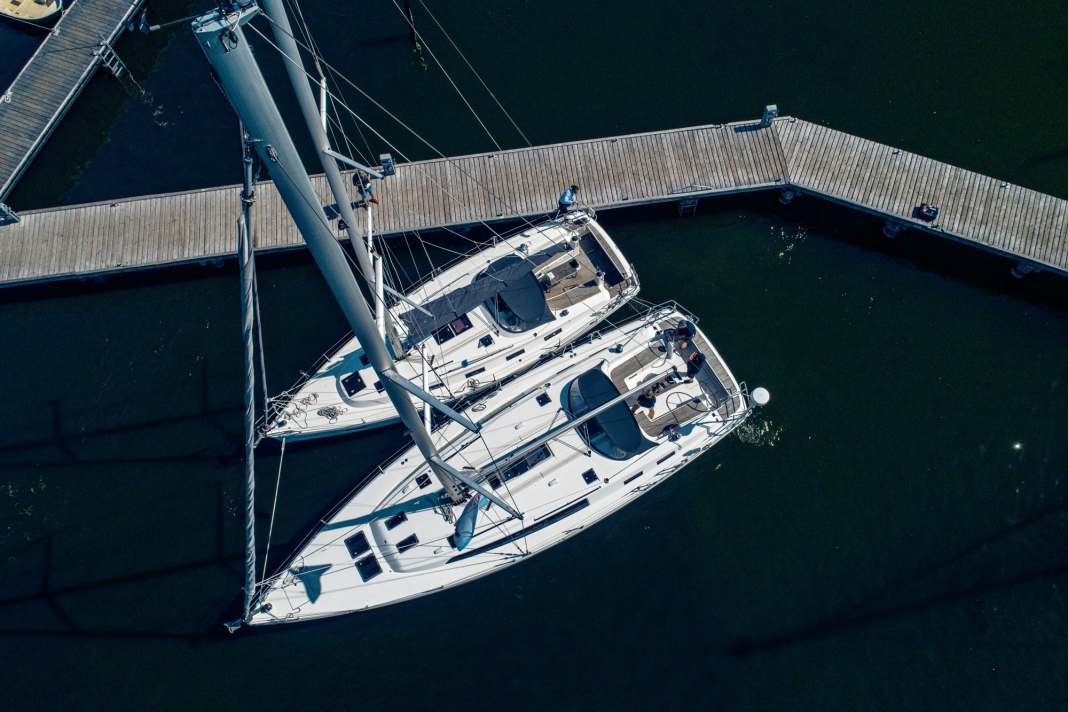



Towing the stricken vessel alongside is the most elegant solution. Ideally, the towing sailboat or motorboat is somewhat larger, but it also works with a smaller boat. Both vessels are tightly connected with a fore and aft line as well as a fore and aft spring - no different from alongside the jetty.
It is important to use plenty of fenders to prevent damage. When turning in harbour manoeuvres and due to waves from other sailors or motorboats, very high compressive forces occur at the point on the hull where the boats rest against each other. As many fenders as possible must be placed there. If another sailor is towing, the crews must ensure that the rigs are not at the same height and cannot collide. In addition, the stern of the tug should be behind that of the distressed vessel, which makes it easier to steer. When connected in this way, relatively fast sailing is also possible, at least in smooth water.
In the harbour, mooring manoeuvres are possible even in the tightest of spaces, as the yacht's propulsion can also be used without a rudder. This means that turns can be made on the plate and the damaged boat can be brought to the dock very sensitively. If the propeller of the damaged boat is also no longer functional, for example due to a broken rudder, manoeuvring is not as pleasant, but it still works. The only disadvantage is that the method does not work in rough seas. Then the risk of severe damage due to the hulls and rigs hitting each other is simply too great. In addition, under such conditions, it is no longer possible to think about travelling straight ahead in a controlled manner. This method is therefore more useful for the last few metres into the harbour and onto the jetty.
Two anchor balls placed on top of each other signal to the other crews that the vessel is unmanoeuvrable. As very few yachts carry two anchor balls, this signal can only be given with an additional anchor ball once the towing assistance has arrived.
Valuation
- + Safe towing
- + Precise manoeuvring in the harbour
- - Does not work in rough seas
With broken steering cable
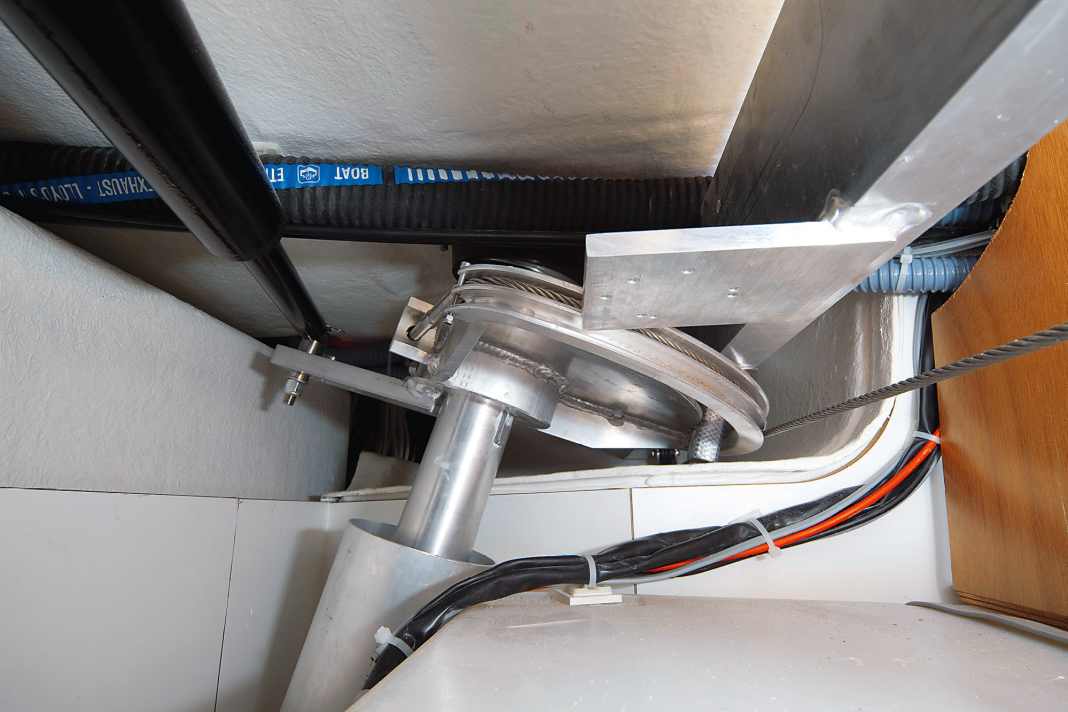



If the steering fails but the rudder blade(s) are still there, an emergency tiller can be used to steer. This is the case, for example, if the steering cable has come loose and jumped off the quadrant, the screw connection for retightening has come completely loose or the steering cable has broken. In this case, the crew turns the wheels in vain, the movement can no longer be transmitted to the quadrant and thus to the rudder blade. The emergency tiller is attached to the rudder shaft from above. This usually requires a cover to be opened with the winch handle or, in our case, a flap. With the twin rudder system on our test boat, the emergency tiller had to be attached backwards, as otherwise it would have collided with the wheel and steering column. So a little rethinking is required when steering.
Despite the changeover, it steered very well. With one rudder blade, the shaft is centred in the cockpit and the tiller is attached and used as normal. The pressure was moderate and the yacht could be steered precisely. With more wind and waves, higher rudder pressure is to be expected, which can be tiring with the short tiller. Lines, skilfully redirected to the winches, can then make steering easier.
Valuation
- + The boat steers well with an emergency tiller
- + Also suitable for mooring manoeuvres
- - Heavy loads can occur on the tiller in strong winds and swells
Checklist rudder breakage
- Stop the journey.Beware of propellers, possibly parts in the water
- Hoist sails
- Check for water ingress
- Anchor in shallow water
- Backwards with engine and genoa to windward at the leeward mark
- Inspect the damage. Has the rudder actually broken off?
- If the control cable breaks: Set emergency tiller or steer on autopilot
- If the rudder is off: build an emergency rudder (if no towing aid is available)
- Get towing assistance (Pan-Pan emergency call)
- Clear the drift anchor. If nothing else is at hand: from the life raft
Video on YACHT-TV: How to get ahead without a rudder
This article first appeared in YACHT 16/2020 and has been updated for the online version.

